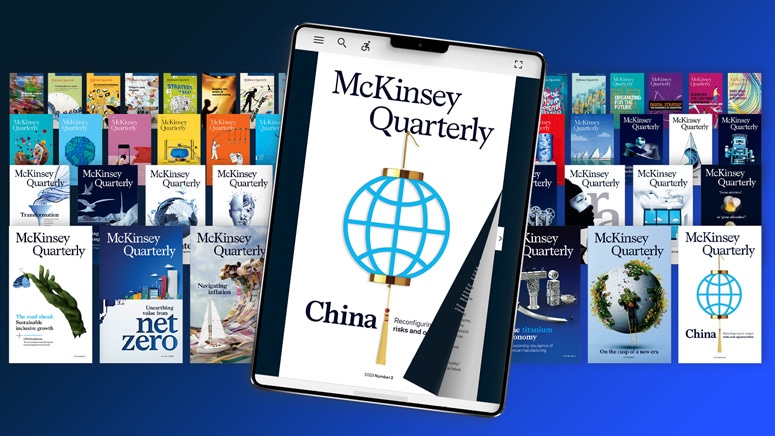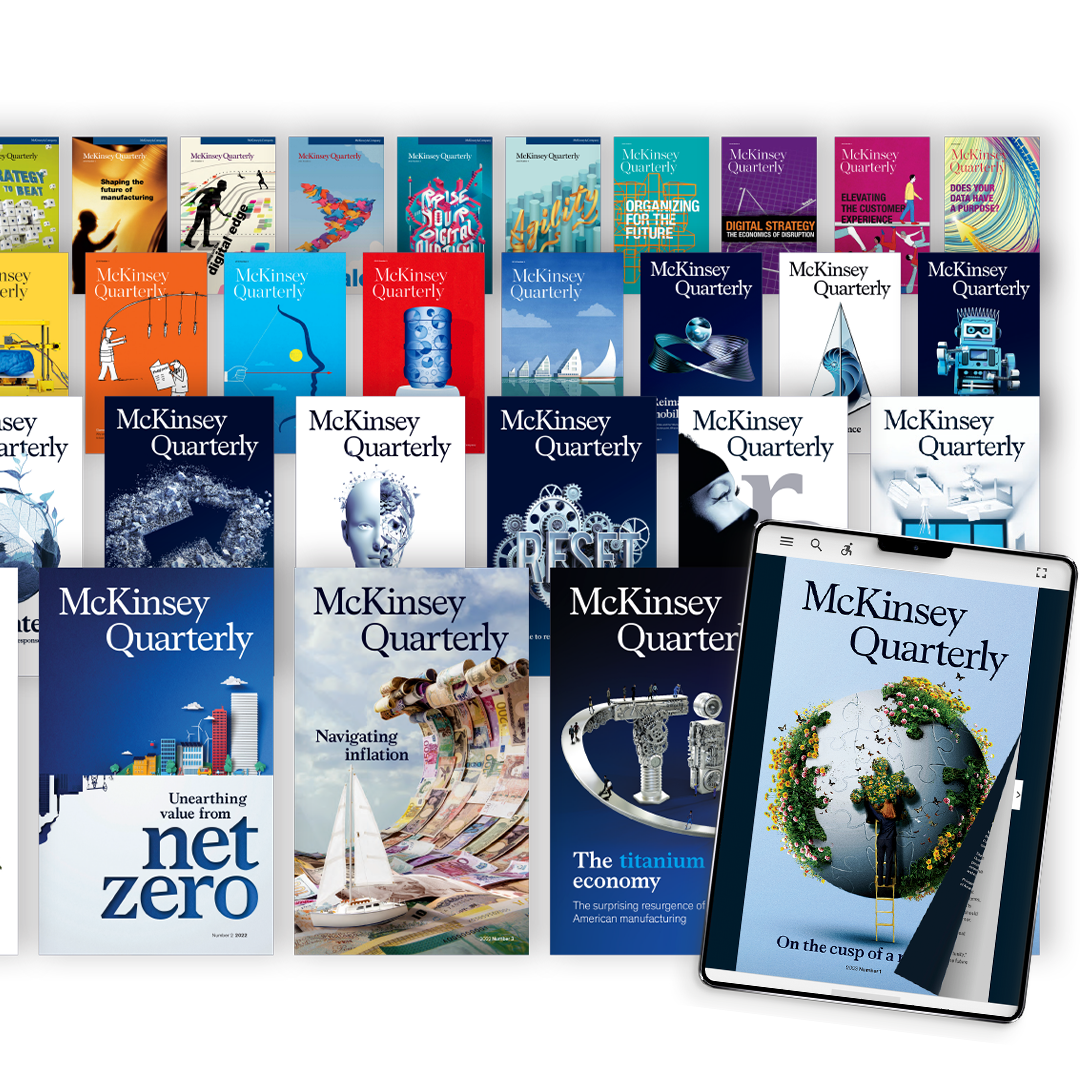Archives
- By thread 5349
-
By date
- June 2021 10
- July 2021 6
- August 2021 20
- September 2021 21
- October 2021 48
- November 2021 40
- December 2021 23
- January 2022 46
- February 2022 80
- March 2022 109
- April 2022 100
- May 2022 97
- June 2022 105
- July 2022 82
- August 2022 95
- September 2022 103
- October 2022 117
- November 2022 115
- December 2022 102
- January 2023 88
- February 2023 90
- March 2023 116
- April 2023 97
- May 2023 159
- June 2023 145
- July 2023 120
- August 2023 90
- September 2023 102
- October 2023 106
- November 2023 100
- December 2023 74
- January 2024 75
- February 2024 75
- March 2024 78
- April 2024 74
- May 2024 108
- June 2024 98
- July 2024 116
- August 2024 134
- September 2024 130
- October 2024 141
- November 2024 171
- December 2024 115
- January 2025 216
- February 2025 140
- March 2025 220
- April 2025 233
- May 2025 239
- June 2025 303
- July 2025 162
-
Effortless Vehicle Inspection Across Different Industries
Effortless Vehicle Inspection Across Different Industries
Minimize downtime and reduce costs across industries.Minimize downtime and reduce costs across industries.
Use Cases Across Industries
Chemical Transportation Fleets
Manual vehicle inspections in chemical transportation posed challenges, including time constraints, compliance issues, and limited real-time insights.
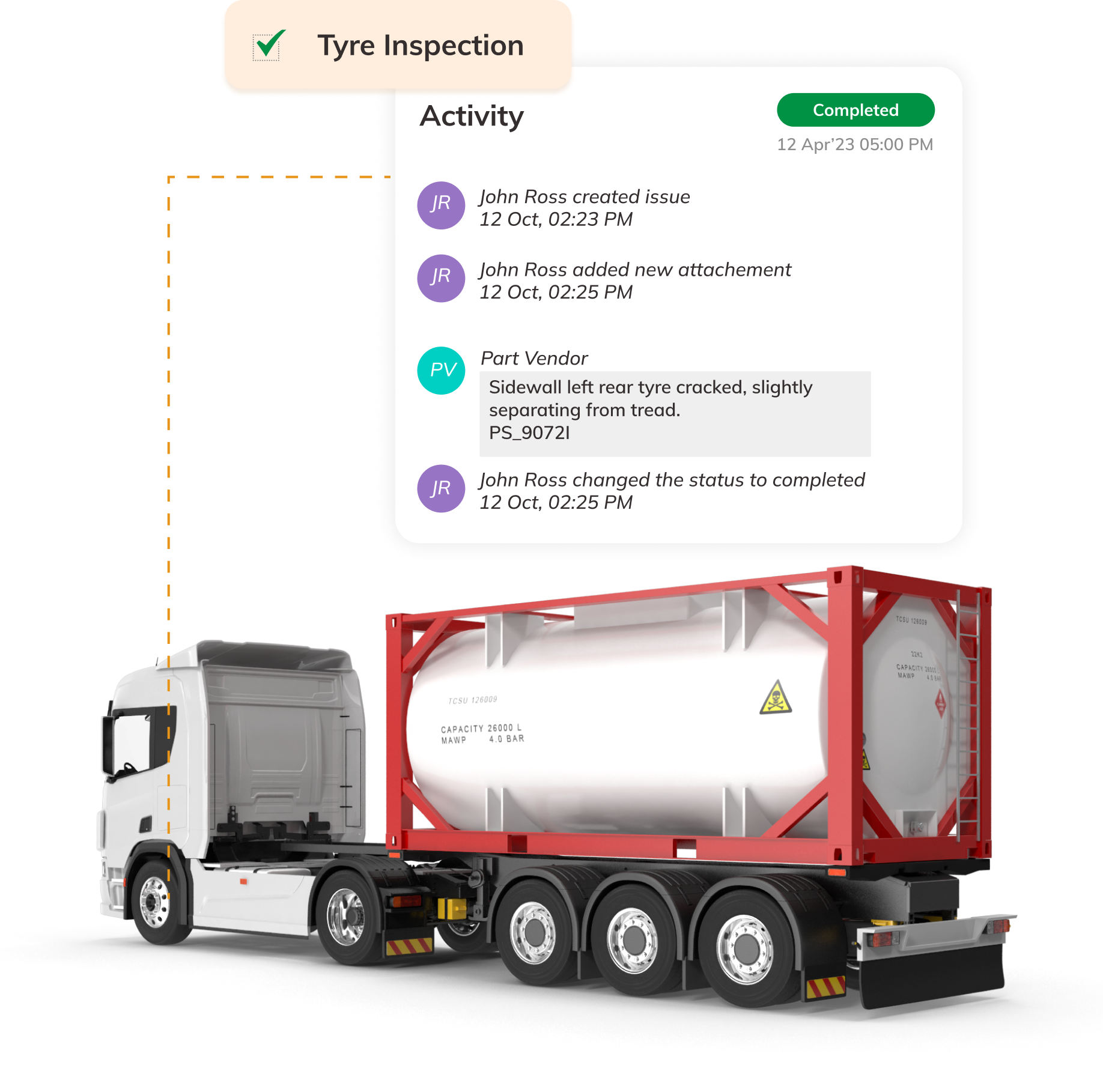
Construction Fleets
Construction fleets face challenges with manual inspections, human error in documentation, and compliance management.
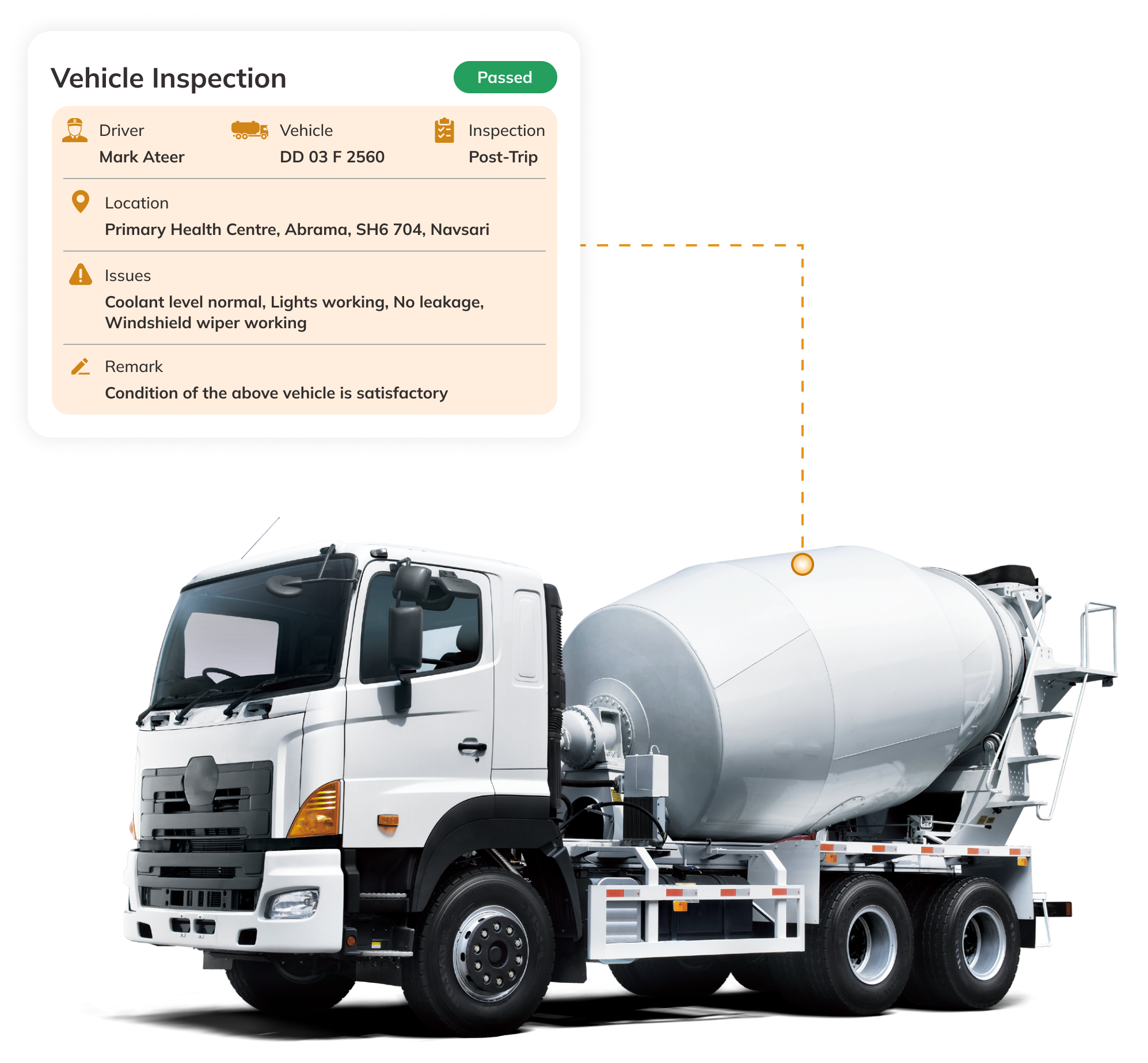
Passenger Transportation Fleets
Streamline pre-trip inspections and maintenance schedules for passenger transportation fleets, ensuring compliance with safety regulations

Discuss your use-case to get your business growing

Uffizio Technologies Pvt. Ltd., 4th Floor, Metropolis, Opp. S.T Workshop, Valsad, Gujarat, 396001, India
by "Sunny Thakur" <sunny.thakur@uffizio.com> - 12:30 - 13 Jun 2023 -
What’s next for the global beauty market?
On Point
Our retail sales projections for 2027
by "McKinsey On Point" <publishing@email.mckinsey.com> - 12:19 - 13 Jun 2023 -
Attention
Dear Sir/Madam,
I plead in the name of humanity and to all those it may concern.
I write to enquire if you or your organisation can supply food. such as Rice, Beans, to a war region.
We shall make upfront payment before your supply.
Your help can save lives over here.
Regards
David MoussavouGoma Democratic Republic of Congo
by "David" <davidmoussavou@sendgrid.net> - 12:11 - 13 Jun 2023 -
ตามทันโลกยุคใหม่! กับคู่มือการออกแบบดาต้าเซ็นเตอร์อย่างยั่งยืน
Schneider Electric
สอบถามเพิ่มเติม View onlineชไนเดอร์ขอเสนอ!โซลูชั่นการออกแบบData Centerอย่างยั่งยืนชไนเดอร์ อิเล็คทริคขอเชิญทุกท่านลงทะเบียนเข้าร่วมสัมมนาภายใต้ Lunch&Learn Program 2023
ไฮไลท์:- ภาพรวมและแนวโน้มธุรกิจ Data Center ในประเทศไทย
- ที่มาและความสำคัญของหลักการออกแบบระบบไฟฟ้าในธุรกิจ Data center
- หลักการออกแบบ Smart data center โดยใช้ IOT platform อย่างมีประสิทธิภาพ
- กรณีศึกษาและการประยุกต์ใช้โดย Schneider EcoStruxure สำหรับ Data center
ต่อที่ 2 ลุ้นรับของรางวัลพิเศษจากชไนเดอร์ When?27 มิถุนายน 2566
When?27 มิถุนายน 2566
12:00-16:00 น. Where?ชไนเดอร์(สำนักงานใหญ่) อาคารรุ่งโรจน์ธนกุล ชั้น 1 ห้อง Training Room1
Where?ชไนเดอร์(สำนักงานใหญ่) อาคารรุ่งโรจน์ธนกุล ชั้น 1 ห้อง Training Room1+ Lifecycle Services From energy and sustainability consulting to optimizing the life cycle of your assets, we have services to meet your business needs. Schneider Electric
46 Rungrojthanakul Building. 1st, 10th, 11th Floor, Ratchadapisek Road. Huaykwang
Bangkok - 10310, Thailand
Phone +662 617 5555© 2023 Schneider Electric. All Rights Reserved. Schneider Electric is a trademark and the property of Schneider Electric SE, its subsidiaries and affiliated companies. All other trademarks are the property of their respective owners.
by "Schneider Electric" <reply@se.com> - 12:00 - 13 Jun 2023 -
Bad Google Review Deletion
Hi I am trying to get in touch with you regarding your negative or unwanted Google reviews. We remove negative and fake reviews permanently from Google, Facebook, Trustpilot, Glassdoor and many more platforms . There is NO UPFRONT PAYMENT to get started with our service. You will only pay after we remove the review. Please reply to this email for more information. Yours Sincerely Macy Thomas _________________________________________________________ Please ask to be NO if you are not interested.
by "Macy Thomas" <info@mysummersolutions.com> - 11:05 - 12 Jun 2023 -
Oil,Gas and Petrochemical Products Ready For Immediate Shipment.Only For Serious Buyers
Dear Sir / Madam,
I hope this message meets you well, We are a leading petrochemical
exportation in Kyrgyzstan, Kazakhstan, Azerbaijan, Georgia and
Russian, officially registered and licensed to three reliable
Refineries.We hereby state our readiness and willingness to sell our listed
products and render a speedy execution of contracts. We have the
following products for sale Jet fuel, Mazut, D2, D6, EN590, LNG, LPG,
UREA, JP54, ESPO, AGO, Pet Coke, LCO, Bitumen 60/70. We can execute
transaction delivery on FOB, DIP/PAY, CIF and TTO basis.In your response indicating any of your interest,
our SCO for your perusal for further process.Kind Regards,
Mr. Sarzhin Vladimir Aleksandrovich
CEO
LLC "AVS-kontinent"
Certified Sellers Rep./Mandate
Moscow, Russia
Tel/Whatsapp: +7-989-182-5364
Skype ID: live:.cid.6f6cf81aa82198a
Email:llc.avs-kontinent01@bk.ru
by "Sarzhin Vladimir Aleksandrovich" <postmaster@poddelka.com> - 04:02 - 12 Jun 2023 -
Pixels of progress: A microregional perspective on global development
Delve into the findings New from McKinsey & Company

Pixels of progress: A microregional perspective on global development
Delve into the findings Prefer audio? Listen to the podcast, and explore past episodes of the Future of Asia podcast. Subscribe via Apple Podcasts, Google, Stitcher, or Spotify.

Share these insights
This email contains information about McKinsey's research, insights, services, or events. By opening our emails or clicking on links, you agree to our use of cookies and web tracking technology. For more information on how we use and protect your information, please review our privacy policy.
You received this email because you subscribed to our McKinsey Global Institute alert list.
Copyright © 2023 | McKinsey & Company, 3 World Trade Center, 175 Greenwich Street, New York, NY 10007
by "McKinsey & Company" <publishing@email.mckinsey.com> - 02:09 - 12 Jun 2023 -
Get a move on productivity: A leader’s guide
Make a production Brought to you by Liz Hilton Segel, chief client officer and managing partner, global industry practices, & Homayoun Hatami, managing partner, global client capabilities
Productivity plays a critical role in history—most human progress wouldn’t have been possible without this basic measure of output relative to input. But defining productivity is becoming more complex as hybrid work and automation transform what gets produced, when, and how. Tangible output is still important, but so are employee well-being, social connections, and collaboration; hard work is still important, but too much of it can be counterproductive. The sluggish productivity growth that global economies have been mired in for years needs leaders to jump-start it. McKinsey senior partner Kweilin Ellingrud points out that “robust productivity performance remains one of the fundamental components of a healthy economy and broad-based prosperity.”
“Productivity is the way that we collectively get wealthier,” says McKinsey partner Charles Atkins. “We really have to get more productive by generating more output with each hour that we work, which is really quite a simple insight.” But despite advances in technology—a vital enabler of productivity—US productivity growth has averaged just 1.4 percent since 2005. Our research shows that returning that growth rate to its historical average of 2.2 percent could add as much as $10 trillion to the economy and alleviate problems such as workforce shortages, debt, inflation, and the cost of energy. A good starting point for CEOs may be to prepare to develop and compete for talent, suggests McKinsey senior partner Olivia White. “Labor markets are going to be tight in some form for the foreseeable future. . . . The second broad thing is that digital transformations are important. Commit to that transformation with real goals and shared accountability.”
That’s the number of percentage points by which productivity growth has declined across advanced economies since the mid-2000s, according to McKinsey research. One reason may be that the effects of digitization have not yet materialized at scale: for example, Europe may be operating at only 12 percent of digital potential and the US at 18 percent. The digital innovations that companies implement “do not yet have a direct and immediate impact on output and productivity growth,” observe McKinsey senior partner Jonathan Woetzel and colleagues. “As a result, we may be experiencing a renewal of the Solow Paradox of the 1980s, with the digital age around us but not yet visible in the productivity statistics.”
That’s McKinsey partner Erica Coe in a podcast on reviving personal productivity at a time of widespread employee burnout. The COVID-19 pandemic worsened existing behavioral-health issues that may diminish performance and productivity. Companies would be better equipped to intervene if they could measure the signs of burnout early on, suggests Coe: “There are . . . a number of ways to get a standardized measurement of burnout and then to measure that alongside other key performance metrics, such as financial metrics, safety, equality, and employee turnover.”
Technology and productivity are inextricably linked. So it’s no surprise that the technology now making headlines, generative AI, almost has a “gold rush mentality around it,” says America Online cofounder and venture capitalist Steve Case in this discussion with McKinsey leaders and industry executives. McKinsey senior partner and North America managing partner Asutosh Padhi cautions that “human judgment is still critical” in applying generative-AI technologies. “What they provide is something that’s complementary,” he says. “This is technology that can enhance or build upon people’s skill sets. Employers must rethink how they are leveraging technology and provide the right training and tools. There’s a reimagination opportunity there that could be a huge boon for productivity.”
Many organizations no longer define productivity in terms of an on-site 9-to-5 workday, with the boss keeping a strict eye on things. But today’s remote and hybrid workplaces may pressure employees into enacting “productivity theater,” whereby they try to show supervisors how busy they are by using various hacks—for example, “mouse jigglers” can move mice around continuously to prevent computers from becoming inactive. Tracking productivity through employee surveillance can be controversial and unethical. Instead, creating a positive employee experience by fostering trust and engagement may be a better way for leaders to enhance productivity.
Lead productively.
— Edited by Rama Ramaswami, senior editor, New York
Share these insights
Did you enjoy this newsletter? Forward it to colleagues and friends so they can subscribe too. Was this issue forwarded to you? Sign up for it and sample our 40+ other free email subscriptions here.
This email contains information about McKinsey’s research, insights, services, or events. By opening our emails or clicking on links, you agree to our use of cookies and web tracking technology. For more information on how we use and protect your information, please review our privacy policy.
You received this email because you subscribed to the Leading Off newsletter.
Copyright © 2023 | McKinsey & Company, 3 World Trade Center, 175 Greenwich Street, New York, NY 10007
by "McKinsey Leading Off" <publishing@email.mckinsey.com> - 02:44 - 12 Jun 2023 -
Commercial real estate has always seemed like a safe bet amid inflation. Is it still?
On Point
New analysis on real estate returns Brought to you by Liz Hilton Segel, chief client officer and managing partner, global industry practices, & Homayoun Hatami, managing partner, global client capabilities
• Well-earned rep. CRE has long enjoyed a reputation as a solid inflation hedge. McKinsey senior partner Rob Palter and coauthors discovered that CRE’s inflation-beating status is deserved: through seven inflationary periods dating back to 1980, CRE returns, at 11.7% annualized, have generally outperformed inflation. But in the current period of high inflation, is CRE likely to continue performing in the same way? If not, what can owners and operators do about it?
• Critical cap rates. CRE has outperformed inflation in the recent past, but not for the reasons many people might think. McKinsey analysis shows that rent growth rarely keeps up with inflation. Instead, capitalization rates (the net operating income yield investors are willing to accept) have tended to compress as investors poured into what they perceived as a safe asset class. Today, cap rate compression is far from guaranteed. Learn what strategies CRE owners and operators could take to reduce operating costs, retain and attract tenants, and preserve value as costs rise.
— Edited by Katy McLaughlin, senior editor, Southern California
This email contains information about McKinsey's research, insights, services, or events. By opening our emails or clicking on links, you agree to our use of cookies and web tracking technology. For more information on how we use and protect your information, please review our privacy policy.
You received this email because you subscribed to the On Point newsletter.
Copyright © 2023 | McKinsey & Company, 3 World Trade Center, 175 Greenwich Street, New York, NY 10007
by "McKinsey On Point" <publishing@email.mckinsey.com> - 12:20 - 12 Jun 2023 -
บอกลาปัญหาระบบการดำเนินการหยุดชะงักโดยปราศจากการวางแผน
Schneider Electric
EcoConsult Expertise for Your Businessปลดล็อคศักยภาพทางไฟฟ้าของไซต์งานของคุณเรียน Abul,
เราหวังว่าอีเมลฉบับนี้จะสนับสนุนและช่วยเหลือคุณได้เป็นอย่างดี
เราได้ติดต่อและมอบข้อเสนอพิเศษสำหรับไซต์งานคุณ โดยไม่มีข้อผูกมัดในการประเมินสินทรัพย์ด้านไฟฟ้า เพราะเราเข้าใจทีมงานผู้จัดการและดูแลอาคาร ถึงผลกระทบต่างๆเป็นอย่างดี
เรามักจะอยู่ในจุดที่ยากลำบาก ระหว่างเจ้าหน้าที่ในการดูแลรักษาอาคารให้มีความพร้อมใช้งาน แต่ในขณะเดียวกันก็มักขาดทรัพยากรเพื่อให้การดำเนินงานมีเสถียรภาพผลลัพธ์สุดท้ายส่วนใหญ่มักเจอกับทางตัน ทำให้การบริหารงานอาคารเป็นไปอย่างล้มเหลว และเมื่อระบบหยุดทำงาน โดยไม่ได้วางแผนและเกิดขึ้นอย่างหลีกเลี่ยงไม่ได้ คุณในฐานะผู้จัดการอาคารจะเป็นบุคคลแรกที่ฝ่ายบริหารอาคารมองเห็นและต้องการการช่วยเหลือในการจัดการทั้งหมด
นี่คือ สิ่งที่เราช่วยคุณได้
การประเมินสินทรัพย์ระบบไฟฟ้าของ ชไนเดอร์ อิเล็คทริค ช่วยให้คุณได้รับรายงานการประเมินไซต์งาน ซึ่งนำเสนอข้อมูลที่จำเป็นต่อการวางแผนของคุณ หรือให้ทางเลือกที่ดีที่สุดถัดไป กรณีที่มีความจำเป็นในการเปลี่ยนอุปกรณ์อย่างเร่งด่วนตลอด 12 เดือนที่ผ่านมา นี่คือวิธีที่ชไนเดอร์ อิเล็คทริคช่วยเหลือลูกค้าและพันธมิตรหลายรายของเราในการทำให้ไซต์งานของพวกเขามีความน่าเชื่อถือ ยืดหยุ่น และมีประสิทธิภาพมากขึ้น
หากคุณต้องการให้เราช่วยแสดงความชัดเจนเกี่ยวกับสินทรัพย์ทางไฟฟ้าของสถานที่ทำงานของคุณ โดยใช้สภาพและข้อกำหนดการบำรุงรักษา ทั้งหมดนี้ไม่มีข้อผูกมัด เพียงแค่ ส่งแบบฟอร์ม ติดต่อเรา และเราจะตอบสนองภายใน 3 วันทำการขอแสดงความนับถือ,วราชัย จตุรสถาพร
Cluster Business Vice President+ Lifecycle Services From energy and sustainability consulting to optimizing the life cycle of your assets, we have services to meet your business needs. Schneider Electric
46 Rungrojthanakul Building. 1st, 10th, 11th Floor, Ratchadapisek Road. Huaykwang
Bangkok - 10310, Thailand
Phone +662 617 5555© 2023 Schneider Electric. All Rights Reserved. Schneider Electric is a trademark and the property of Schneider Electric SE, its subsidiaries and affiliated companies. All other trademarks are the property of their respective owners.
by "Warachai Chaturasathaporn, Schneider Electric" <Marcom.thailand@se.com> - 10:01 - 11 Jun 2023 -
Bad Google Review Deletion
Hi I am trying to get in touch with you regarding your negative or unwanted Google reviews. We remove negative and fake reviews permanently from Google, Facebook, Trustpilot, Glassdoor and many more platforms . There is NO UPFRONT PAYMENT to get started with our service. You will only pay after we remove the review. Please reply to this email for more information. Yours Sincerely Laura Jayne _________________________________________________________ Please ask to be NO if you are not interested.
by "Laura Jayne" <info@clickcreators.com> - 09:40 - 10 Jun 2023 -
The week in charts
The Week in Charts
Gen Z’s mobility preferences, banking needs in the Philippines, and more Share these insights
Did you enjoy this newsletter? Forward it to colleagues and friends so they can subscribe too. Was this issue forwarded to you? Sign up for it and sample our 40+ other free email subscriptions here.
This email contains information about McKinsey's research, insights, services, or events. By opening our emails or clicking on links, you agree to our use of cookies and web tracking technology. For more information on how we use and protect your information, please review our privacy policy.
You received this email because you subscribed to The Week in Charts newsletter.
Copyright © 2023 | McKinsey & Company, 3 World Trade Center, 175 Greenwich Street, New York, NY 10007
by "McKinsey Week in Charts" <publishing@email.mckinsey.com> - 03:03 - 10 Jun 2023 -
El comienzo de una nueva era de liderazgo
Además, el valor de “una sola empresa” ¿Cómo es el liderazgo en una época en la que la turbulencia y la disrupción son la norma? No es el modelo al que estamos acostumbrados. En el artículo destacado de este mes del McKinsey Quarterly, Aaron De Smet, Arne Gast, Johanne Lavoie y Michael Lurie se sumergen en la transición de una era de líderes individuales a una era de equipos de liderazgo en red que dirigen la organización, así como en los cinco cambios evolutivos fundamentales que los líderes están llamados a hacer en su mentalidad y formas de trabajar. Otros temas destacados en la edición de este mes son los siguientes:
• Por qué las empresas que adoptan una estrategia de escucha continua pueden construir una clara ventaja competitiva
• La importancia de la velocidad en las transformaciones empresariales
• Cuatro formas en que los CEOs pueden evitar la autocomplacencia y crear más valor
La selección de nuestros editores
LOS DESTACADOS DE ESTE MES

Capturar el valor de “una sola empresa”
Nuestra investigación patentada en 2,000 empresas demuestra que vale la pena operar como "una sola empresa". He aquí cómo las organizaciones con mejores resultados hacen que funcione.
Vea lo que se necesita
La próxima ventaja competitiva en talento: Escuchar continuamente a los empleados
El análisis de personas (people analytics) puede proporcionar información en tiempo real. Aquí explicamos cómo los líderes pueden usarlo para identificar necesidades críticas, tomar decisiones más rápido y fortalecer las propuestas de valor de sus empleados.
Aproveche el poder de las personas
En sus marcas, listos, fuera… y sigamos adelante: Por qué la velocidad es clave para una transformación exitosa
En el entorno empresarial actual, las empresas que buscan transformar total o parcialmente sus negocios necesitan crear valor rápidamente.
3 acciones cruciales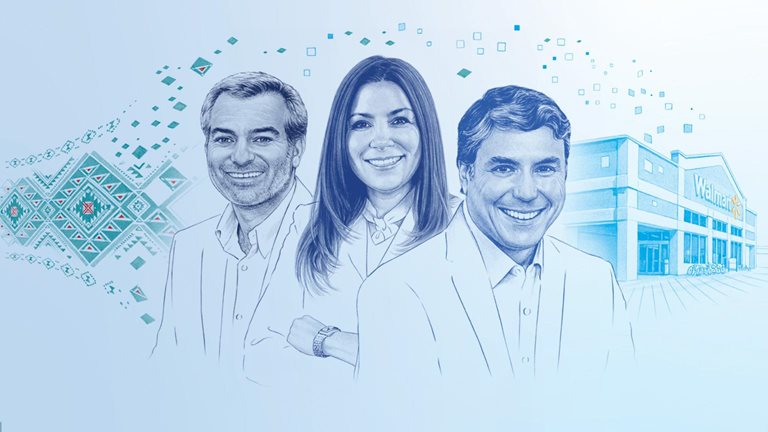
Mirando hacia dentro: Cómo Walmart en México cambió todo para un futuro omnicanal
El comité ejecutivo de Walmex tuvo que liderar de manera diferente para llevar a la empresa a la era digital. En esta entrevista, reflexionan sobre los cambios en la organización y en ellos mismos.
Reinvéntese
El mercado de la belleza en 2023: Un informe especial sobre el estado de la moda
El brillo de la industria de la belleza ha demostrado ser difícil de resistir, atrayendo a muchas empresas e inversionistas nuevos. Las marcas deben tomar decisiones diferenciadoras para tener éxito en este panorama cambiante y cada vez más competitivo.
Desarrolle estrategias a la medida
Ya es hora de ser estratégico sobre diversidad, equidad e inclusión (DEI)
Las empresas se han comprometido a ser más diversas, inclusivas y equitativas, pero a muchas se les dificulta lograr un progreso significativo en estas áreas. Aquí explicamos cómo pueden cumplir con sus ambiciones de diversidad, equidad e inclusión (DEI), ahora y a largo plazo.
5 pasos para el cambioEsperamos que disfrute de los artículos en español que seleccionamos este mes y lo invitamos a explorar también los siguientes artículos en inglés.

McKinsey Explainers
Find direct answers to complex questions, backed by McKinsey’s expert insights.
Learn more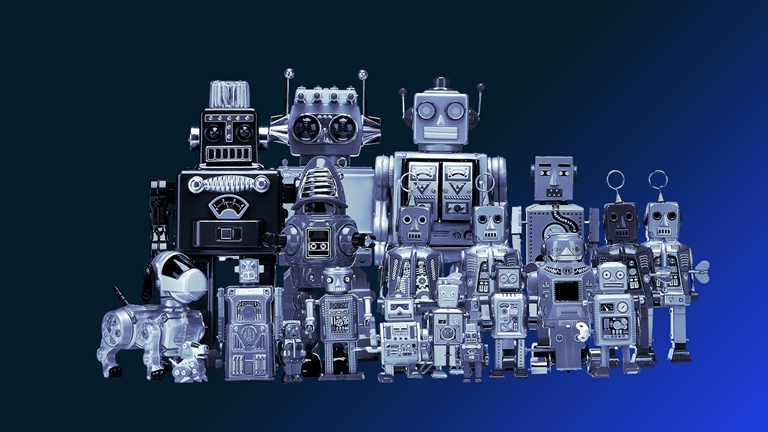
McKinsey Themes
Browse our essential reading on the topics that matter.
Get up to speed
McKinsey on Books
Explore this month’s best-selling business books prepared exclusively for McKinsey Publishing by NPD.
See the lists
McKinsey Chart of the Day
See our daily chart that helps explain a changing world—as we strive for sustainable, inclusive growth.
Dive in
McKinsey Classics
For ways businesses can identify risk aversion and root out the biases that can stymie potential investment projects, read McKinsey partner Tim Koller’s 2012 classic “Overcoming a bias against risk.”
Rewind
Visualize it
The Week in Charts newsletter rounds up our best data-driven visuals to help explain a changing world—delivered to you each Saturday.
Subscribe now— Edited by Eleni Kostopoulos, managing editor, New York
COMPARTA ESTAS IDEAS
¿Disfrutó este boletín? Reenvíelo a colegas y amigos para que ellos también puedan suscribirse. ¿Se le remitió este articulo? Regístrese y pruebe nuestras más de 40 suscripciones gratuitas por correo electrónico aquí.
Este correo electrónico contiene información sobre la investigación , los conocimientos, los servicios o los eventos de McKinsey. Al abrir nuestros correos electrónicos o hacer clic en los enlaces, acepta nuestro uso de cookies y tecnología de seguimiento web. Para obtener más información sobre cómo usamos y protegemos su información, consulte nuestra política de privacidad.
Recibió este correo electrónico porque es un miembro registrado de nuestro boletín informativo Destacados.
Copyright © 2023 | McKinsey & Company, 3 World Trade Center, 175 Greenwich Street, New York, NY 10007
by "Destacados de McKinsey" <publishing@email.mckinsey.com> - 08:32 - 10 Jun 2023 -
Last chance to register : Simplify the Development and Deployment of AI Models using Deep Learning Workbench
Deep Learning Workbench: Simplifying the Development and Deployment of AI Models

Deep Learning Workbench: Simplifying the Development and Deployment of AI Models
Thursday, June 22, 2023
8:30am - 9:30am PDTRegister Now 
Profile and optimize your neural network on various Intel® hardware configurations hosted in the cloud environment without any hardware setup at your end and integrate the optimized model in the user-friendly environment of JupyterLab*. Session will cover:
- Introduction to the Deep Learning Workbench (DLWB) and its features
- Best practices for Optimizing AI models using DLWB
- New version Deep Learning Workbench - Cloud
Register Now 
Speaker

Monique Jones
Developer Cloud for the Edge - Technical Product Manager
Intel CorporationMeet Monique, a passionate technical product manager for Intel Developer Cloud for the Edge with 10+ years of experience in AI and cutting-edge technology. She brings a unique blend of technical expertise and product management skills to solve complex business challenges and drive innovation. Prior to her current role, as a senior software engineer and team lead at Intel.
Monique developed end-to-end AI solutions and optimized AI models for Intel hardware, resulting in multi-million dollar design wins. Her experience and technical proficiency make her a sought-after speaker at worldwide conferences and events. Monique holds a Bachelor of Science in Electrical Engineering/Computer Engineering from Texas State University and is dedicated to staying current with the latest technology to leverage AI solutions for transformative change.




If you forward this email, your contact information will appear in any auto-populated form connected to links in this email.
This message was sent to info@learn.odoo.com and is an important business communication related to your current relationship with Intel.
To view and manage your marketing-related email preferences with Intel, please click here.
© 2023 Intel Corporation
Intel Corporation, 2200 Mission College Blvd., M/S RNB4-145, Santa Clara, CA 95054 USA. www.intel.comPrivacy | Cookies | *Trademarks | Manage Preferences
by "Intel Corporation" <intel@plan.intel.com> - 12:13 - 9 Jun 2023 -
Business Growth Leads
Hi,
Can I send you a sample of one of Our B2B email lists? We Provide email lists based on your requirements.
Kindly just share your requirements by filling in the below table:
- Industries:
- Job Titles:
- Geography:
We will soon revert with data count, costs and few samples records for your consideration.
Regards,
Richard Bernard
Sales/Marketing Dept.
Just reply with "Exclude" to prevent further emails.
by richard.bernard@verified-contacts.com - 12:05 - 9 Jun 2023 -
Guest Post Contribution
Hello
I am Harikrishna Kundariya , founder and CEO of eSparkbiz. I am writing this mail to know if you are accepting any guest hosts.
I write on technologies and software development and I feel that my blogs will be perfectly fit for your website.
Here are some reference of my earlier published articles:
https://inc42.com/resources/8-key-iot-trends-shaping-the-future-of-connected-devices/
https://blog.hubspot.com/website/web-development-trends
https://www.entrepreneur.com/article/341181
Here are some interesting topic suggestions for your reader.
Topic 1-.NET 7 Features Your Website Should Have for Great User Experience
Topic 2- The Growing Role of .NET Developers in Modern Application Development
Topic 3- 5 Reasons for Startups to Choose ASPdotNET Over Node.js
Topic 4- Shopify VS WordPress: Which is Better for Ecommerce in 2023?
Topic 5- 7 Prime SEO Tips to Know for .NET Website in 2023
Topic 6- How Much Does It Cost to Build .NET Web App In 2023?
The articles will be well - researched , data driven and in depth blog posts which will be great additions for your blog. Which of the above topics do you think will be great for your website?
I appreciate your time and am really looking forward to working for your blog.
Do share your precious thoughts.
Thanks,
Harikrishna kundariya
CEO and founder
eSparKbiz Technologies.
by "harikrishna Content" <content@esparkbiztechnologies.com> - 09:51 - 9 Jun 2023 -
Young children are experiencing trauma. What should parents and educators do?
On Point
How Sesame Street wants to help Brought to you by Liz Hilton Segel, chief client officer and managing partner, global industry practices, & Homayoun Hatami, managing partner, global client capabilities
• Seeking social skills. With more companies practicing skills-based hiring, future white-collar jobs might not require college degrees, a Harvard Business School professor says. Strong social skills, such as an ability to build productive relationships, will continue to be critical for many roles. People who didn’t experience abuse or neglect during childhood are likelier to develop more advanced social skills at an early age, he adds. Fortunately, anyone can improve their soft skills through repetition, self-reflection, and being open to feedback. [Fortune]
• The truth about trauma. We often think that young children under five are resilient. In truth, many have traumatic experiences that affect their physical, emotional, and cognitive development, says Sesame Workshop’s Jeanette Betancourt in an interview with McKinsey Health Institute partner Katherine Linzer. Adults need to understand that children under five who have suffered trauma may not know how to verbalize their concerns, Betancourt says. Their anxiety might show up as a stomachache, or as clingy or disruptive behavior.
• Helping kids in pain. Sesame Workshop and its celebrated TV show Sesame Street are focused on supporting children’s emotional well-being from very early on, Betancourt shares. “In the US, we’ve tackled everything from parental addiction to parental incarceration to coping with grief,” Betancourt explains. “Globally, we work with crisis and conflict. How do we help the many children experiencing long-term trauma and resettlement?” Learn what parents and educators can do to help kids who have faced traumatic situations.
— Edited by Belinda Yu, editor, Atlanta
This email contains information about McKinsey's research, insights, services, or events. By opening our emails or clicking on links, you agree to our use of cookies and web tracking technology. For more information on how we use and protect your information, please review our privacy policy.
You received this email because you subscribed to the On Point newsletter.
Copyright © 2023 | McKinsey & Company, 3 World Trade Center, 175 Greenwich Street, New York, NY 10007
by "McKinsey On Point" <publishing@email.mckinsey.com> - 12:25 - 9 Jun 2023 -
ลงทะเบียนสัมมนาLunch&Learn program: Sustainable design guide for Datacenter
Schneider Electric
สอบถามเพิ่มเติม View onlineInnovation Talk:Sustainable design guide for Datacenterชไนเดอร์ อิเล็คทริคขอเชิญทุกท่านลงทะเบียนเข้าร่วมสัมมนาภายใต้ Lunch&Learn Program 2023
ไฮไลท์:- ภาพรวมและแนวโน้มธุรกิจ Data Center ในประเทศไทย
- ที่มาและความสำคัญของหลักการออกแบบระบบไฟฟ้าในธุรกิจ Data center
- หลักการออกแบบ Smart data center โดยใช้ IOT platform อย่างมีประสิทธิภาพ
- กรณีศึกษาและการประยุกต์ใช้โดย Schneider EcoStruxure สำหรับ Data center
ต่อที่ 2 ลุ้นรับของรางวัลพิเศษจากชไนเดอร์ When?27 มิถุนายน 2566
When?27 มิถุนายน 2566
12:00-16:00 น. Where?ชไนเดอร์(สำนักงานใหญ่) อาคารรุ่งโรจน์ธนกุล ชั้น 1 ห้อง Training Room1
Where?ชไนเดอร์(สำนักงานใหญ่) อาคารรุ่งโรจน์ธนกุล ชั้น 1 ห้อง Training Room1+ Lifecycle Services From energy and sustainability consulting to optimizing the life cycle of your assets, we have services to meet your business needs. Schneider Electric
46 Rungrojthanakul Building. 1st, 10th, 11th Floor, Ratchadapisek Road. Huaykwang
Bangkok - 10310, Thailand
Phone +662 617 5555© 2023 Schneider Electric. All Rights Reserved. Schneider Electric is a trademark and the property of Schneider Electric SE, its subsidiaries and affiliated companies. All other trademarks are the property of their respective owners.
by "Schneider Electric" <reply@se.com> - 12:00 - 9 Jun 2023 -
The creative process of ideas becoming products
Think creatively Brought to you by Liz Hilton Segel, chief client officer and managing partner, global industry practices, & Homayoun Hatami, managing partner, global client capabilities
What does the creative process look like for a leading designer? How does he work with CEOs and other leaders to foster great design? And why is “the biography of an idea” so important? Jony Ive, cofounder of the creative agency, LoveFrom, and the former design head of Apple, addresses these questions and the process of ideas becoming products, in a new McKinsey Quarterly interview with McKinsey’s chief marketing officer and senior partner Tracy Francis. See why a great idea cannot be predicted, and get creative.
Quote of the day
Chart of the day
ALSO NEW
— Edited by Joyce Yoo, editor, New York
Share these insights
Did you enjoy this newsletter? Forward it to colleagues and friends so they can subscribe too. Was this issue forwarded to you? Sign up for it and sample our 40+ other free email subscriptions here.
This email contains information about McKinsey’s research, insights, services, or events. By opening our emails or clicking on links, you agree to our use of cookies and web tracking technology. For more information on how we use and protect your information, please review our privacy policy.
You received this email because you subscribed to our McKinsey Quarterly alert list.
Copyright © 2023 | McKinsey & Company, 3 World Trade Center, 175 Greenwich Street, New York, NY 10007
by "McKinsey Daily Read" <publishing@email.mckinsey.com> - 06:42 - 8 Jun 2023 -
Experience the First iPaaS with Generative AI
Join us next Wednesday to see Tray Merlin AI live.͏ ͏ ͏ ͏ ͏ ͏ ͏ ͏ ͏ ͏ ͏ ͏ ͏ ͏ ͏ ͏ ͏ ͏ ͏ ͏ ͏ ͏ ͏ ͏ ͏ ͏ ͏ ͏ ͏ ͏ ͏ ͏ ͏ ͏ ͏ ͏ ͏ ͏ ͏ ͏ ͏ ͏ ͏ ͏ ͏ ͏ ͏ ͏ ͏ ͏ ͏ ͏ ͏ ͏ ͏ ͏ ͏ ͏ ͏ ͏ ͏ ͏ ͏ ͏ ͏ ͏ ͏ ͏ ͏ ͏ ͏ ͏ ͏ ͏ ͏ ͏ ͏ ͏ ͏ ͏ ͏ ͏ ͏ ͏ ͏ ͏ ͏ ͏ ͏ ͏ ͏ ͏ ͏ ͏ ͏ ͏ ͏ ͏ ͏ ͏ ͏ ͏ ͏ ͏ ͏ ͏ ͏ ͏ ͏ ͏ ͏ ͏ ͏ ͏ ͏ ͏ ͏ ͏ ͏ ͏ ͏ ͏ ͏ ͏ ͏ ͏ ͏ ͏ ͏ ͏ ͏ ͏ ͏ ͏ ͏ ͏ ͏ ͏ ͏ ͏ ͏ ͏ ͏ ͏ ͏ ͏ ͏ ͏ ͏ ͏ ͏ ͏ ͏ ͏ ͏ ͏Hi Md Abul,
On June 14th, you're invited to the premier event: the Tray Megacast, where we'll introduce the world to Tray Merlin AI – our groundbreaking natural language automation capability for business users. This is your chance to witness the future of automation.
You'll see firsthand how easy it is to obtain instant answers to critical business queries and build powerful workflows using only natural language instructions. Just ask Merlin – like you would ask a colleague – and watch the magic happen.
© Tray.io Inc. 25 Stillman Street, San Francisco, CA 94107, United States
Connectors | Blog | Careers
by "The Tray.io Team" <team@tray.io> - 01:01 - 8 Jun 2023
.png?width=1200&upscale=true&name=Vehicle%20inspection%20usecases%20(1).png)
















